376 Brush Hill Road – Part X – Changing Seasons
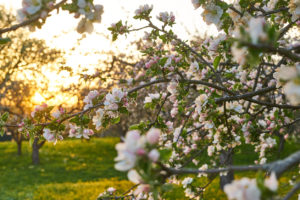
Springtime. A treasured memory is the delicate fragrance of apple blossoms wafting into my bedroom from the orchard beyond the front yard. First had come a cavalcade of daffodils, dozens of them, lining the perennial border that enclosed far side of the front lawn, where, at its edges its curves echoed the shape of the clubs icon in a deck of cards. The lawn at the top curve of the “club” shape rose over a slight berm, then flattened to small greensward punctuated by a flagpole. Standing tall behind he lawn and border–a procession of massive rhododendrons marched along to separate the front yard from the orchard and then along the hedge of Hatfield yews that marked the property line along Brush Hill Road. In the side yard three (or was it originally four?) flowering crab trees spread their branches to creating giant umbrellas of dark pink blossoms over the lawns and gardens between the house and the barn.
Summertime. The screens went up to enclose the front porch—a favorite place to sit and read.
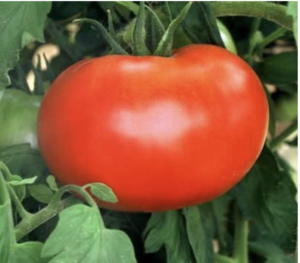 At lunchtime, in summer, it was always down to the garden; what could be better than a sandwich made from a tomato still warm from the sun?
At lunchtime, in summer, it was always down to the garden; what could be better than a sandwich made from a tomato still warm from the sun?
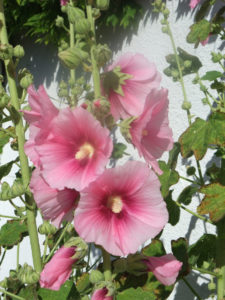
My parents planted a vegetable garden on the far side of the barn. The chicken coop and the L-shaped grape arbor marked its perimeter. Along the well-worn path from the driveway circle to the garden were a raspberry patch and an asparagus bed. I don’t know whether my mother planted the row of hollyhocks that grew against the barn wall or whether they had seeded themselves. They thrived in that spot and all summer, watching over the cucumbers and tomatoes that were our most important crops.
We had nothing to do with the square white beehive in the middle of the garden. It was there when we moved in. Periodically, a beekeeper would come by; I don’t remember how frequently. He would tend the bees and always, when he was harvesting, give my mother a one of the combs. I can see, in my mind’s eye, the waxy comb with its irregular edges propped in her biggest kitchen pan, dripping honey. Next time I saw that honey, it was in jars. Only as a “grown-up” myself have I been able to appreciate just how much magic my mother worked when we were all focused on our own activities.
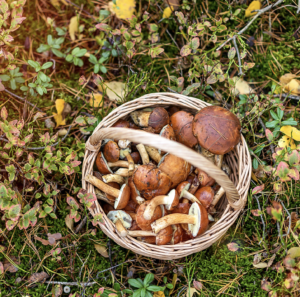 The beekeeper was not the only seasonal visitor whose routines were unchanged by the change in the property’s ownership.
The beekeeper was not the only seasonal visitor whose routines were unchanged by the change in the property’s ownership.
In the fall, a plump old lady in a nondescript print dress would appear, shuffling along the stone wall that ran behind the house and barn. She carried a basket that she filled with mushrooms. No doubt she must have had a conversation with my mother. But never when I was around. I simply have vague memories of seeing her come and go.
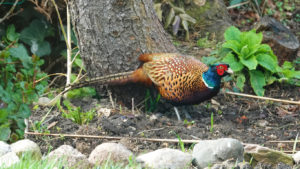
The pathway used by the mushroom huntress was also used by wildlife. Among the creatures we frequently heard, and sometimes saw, were ring-necked pheasants—handsome, colorful birds. We learned to recognize the distinctive cry they made as they were taking flight.
We also became very familiar with the songs of certain birds, especially the cardinals who lived in the shrubbery just outside the window of the bedroom I inherited when Mary Anne got married. As an adult, I loved to hear the cardinals sing. As a teenager who wanted to sleep late back then, not so much!
The mushroom pathway (and pheasant’s runway) was a place I loved to scrabble around. I found countless shards of blue and white porcelain there and naively thought that if I gathered enough, I could piece them together. I suspect this early experience with shards is where my lifelong love of blue-and-white porcelain originated (and why I’ve always been fascinated by archaeology). I wish I could know the provenance of those shards. They were probably from a domestic dumping site disrupted and pushed up against our property line when parcels of the Hollingsworth estate were sold off for development of the house lots on Valentine Road.
In the fall, the porch screens came down and an enclosure of glass panels went up to create a storm porch—a passive solar barrier between the winter cold and the front door. It was always astonishing how warm that unheated space could become on a sunny day.
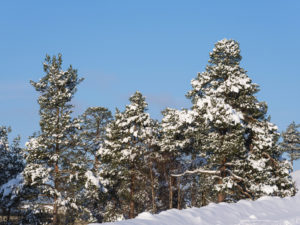
Our first winter, when the first big snowstorm threatened to trap us in the house, there was talk of the impossibility of clearing the long driveway that ran from the road past the house to the barn…one shovelful of snow at a time—even with all of us working. We needn’t have worried. Before the snow had finished falling a man on an ancient red tractor with a plow attached to the front rolled up to the front door. He had been plowing this driveway for years and was happy to continue doing so. And we were happy to have him do so. Down to the barn, around the circle and back to the street…he cleared the driveway quickly. His fee: ten dollars.